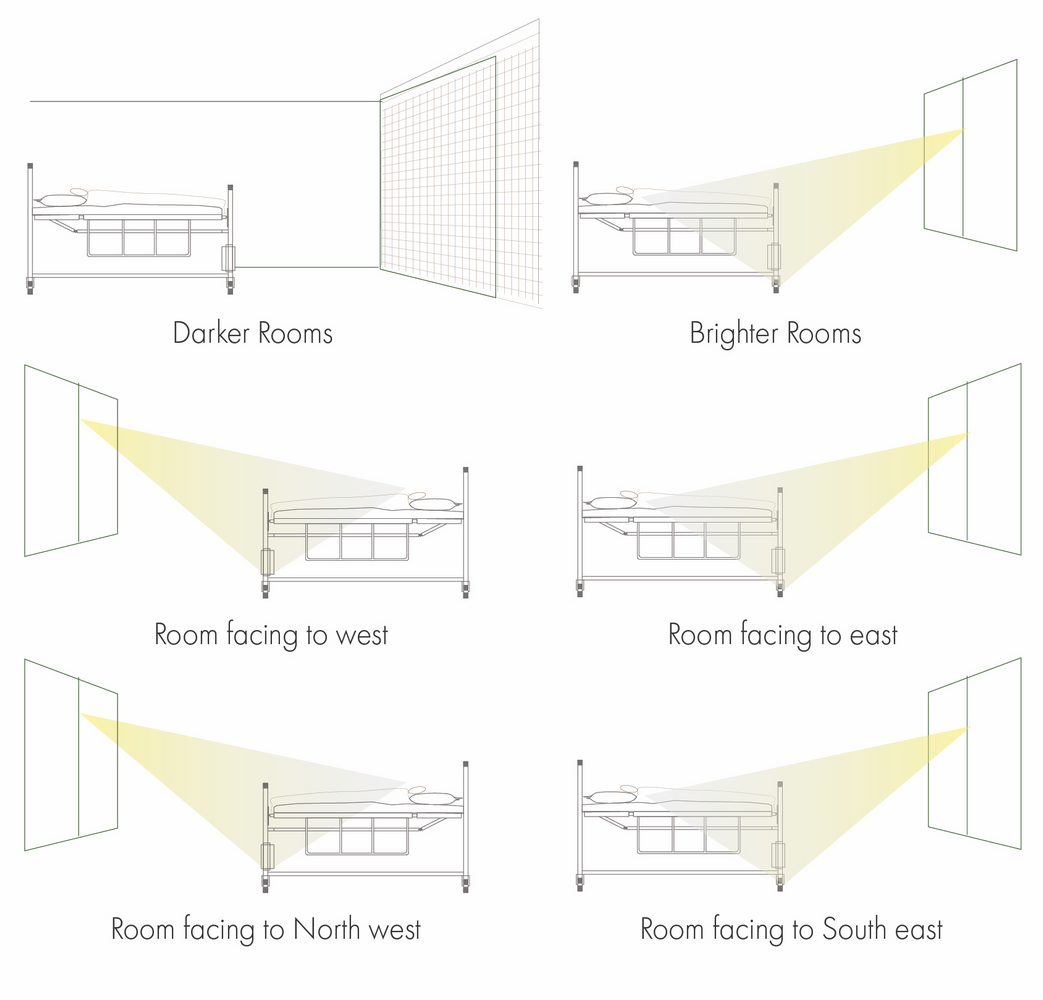Biophilic Materials for Healthcare Design
The Biophlic Design paradigm aims to promote exposure to natural elements in the built environment, to increase the health and wellbeing of occupants. Indeed, previous studies extensively show that natural materials, daylighting, views to nature and vegetation resulted in significant enhancements on patients mood, hospitalization rates, and medication intake.
However, design guidelines that account for the health and wellbeing of patients and medical personnel in relation to biophilic design and connection with the natural environment are not sufficiently developed and healthcare environments still provide alienated spaces.
This research ingurates a new series of evidence-based design guidelines for healthcare environments. Our biophilic healthcare design toolkit was developed according to the quality of evidence, using key indoor and outdoor physical design parameters in relation to their potential impact on patients recovery and medical staff performance. We focus on six biophilic attributes: materials, views, gardens and vegetation, and daylight, in correlation to six types of outcomes: recovery rate, hospitalization days, pain levels, stress levels, active behavior, and task performance.
This work critically contributes to improved design strategies from a range of design characteristics and interventions, including natural materials, views from patients beds, physical access to outdoors, and exposure to direct sunlight.
The Biophlic Design paradigm aims to promote exposure to natural elements in the built environment, to increase the health and wellbeing of occupants. Indeed, previous studies extensively show that natural materials, daylighting, views to nature and vegetation resulted in significant enhancements on patients mood, hospitalization rates, and medication intake.
However, design guidelines that account for the health and wellbeing of patients and medical personnel in relation to biophilic design and connection with the natural environment are not sufficiently developed and healthcare environments still provide alienated spaces.
This research ingurates a new series of evidence-based design guidelines for healthcare environments. Our biophilic healthcare design toolkit was developed according to the quality of evidence, using key indoor and outdoor physical design parameters in relation to their potential impact on patients recovery and medical staff performance. We focus on six biophilic attributes: materials, views, gardens and vegetation, and daylight, in correlation to six types of outcomes: recovery rate, hospitalization days, pain levels, stress levels, active behavior, and task performance.
This work critically contributes to improved design strategies from a range of design characteristics and interventions, including natural materials, views from patients beds, physical access to outdoors, and exposure to direct sunlight.
1/2021—Ongoing




Research
Assistants
Assistants
Penmai Chongtoua
Special
Thanks
Thanks
Josh Jordan